

Paediatric Dentistry forms the foudation of a childs dental habits. It includes prevention and correction of early dental disease. Even if the milk teeth will eventually fall off they lead the permanent teeth into place and form the basis of childs nutrition, thus affecting the overall health.
Pit&Fissure Sealant
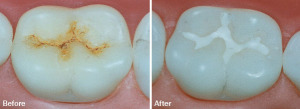
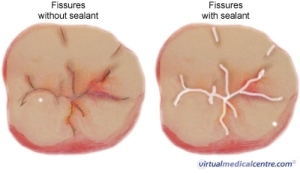
Sometimes brushing is not enough, especially when it comes to those hard-to-reach spots in your mouth. It is difficult for your toothbrush to get in between the small cracks and grooves on your teeth. If left alone, those tiny areas can develop tooth decay.Pit and fissure sealants give your teeth extra protection against decay and help prevent cavities.
Dental sealants are a plastic resin that bonds and hardens in the deep grooves on your tooth’s surface and it is usually applied to the biting surfaces of the back teeth.
Sealants are only applied to the back teeth – the molars and premolars. These are the teeth that have pits and fissures on their biting surfaces. Your dentist will tell you which teeth should be sealed after examining them, whether the fissures are deep enough for sealing to help. Some teeth naturally form with deep grooves which can be sealed, others form with shallow ones which may not need sealing.
- If your child is at high risk for tooth decay, Fluoride supplements in the form of fluoride varnish treatments are recommended.
What is Fluoride Varnish Treatment?
This is a safe dental treatment used by dentists worldwide for children of ages 6 months to 16 years to help prevent, slow down and a remedy for tooth decay. This treatment is provided professionally in the form of a highly concentrated rinse, foam, gel, or varnish where only a small quantity is used and care is taken to avoid any swallowing. The fluoride supplement may be applied with a swab, brush, tray, or mouthwash and can be done 2 to 4 times per year depending on how likely it is that your child may get cavities. It is quickly applied on the top and sides of each tooth with a small brush and it gradually hardens when it comes in contact with saliva. Then it is brushed off after 4 to 12 hours. The child may be asked to avoid eating or drinking for 30 minutes after the treatment so the fluoride can fully absorb and soft and cold or warm (not hot) foods are recommended.
To sum it up, fluoride varnish treatment is a popular “anti-cavity” treatment which is recommended for all age groups and which should definitely be considered by anyone who is prone to dental decay.
Fluoride treatment
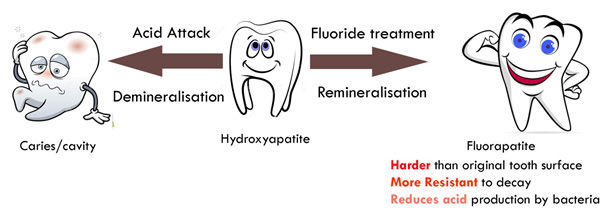
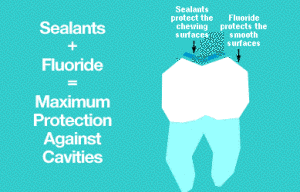
Fillings
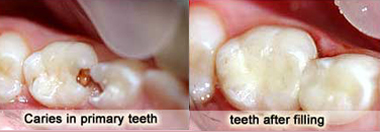

You should take your child’s cavities (also known as caries) in their
primary teeth just as seriously as you should take them in permanent
teeth – meaning, you should seek the assistance of your dental
professional as soon as possible for diagnosis, treatment, and to avoid
other issues.
In short, fillings in your child’s primary teeth are typically just as necessary as fillings in permanent teeth.
It’s essential to care for your child’s primary teeth due to a diversity of reasons:
- Untreated cavities can cause discomfort and pain.
- Cavities can lead to other dental problems, including infection.
- Your child’s dental health affects other biological systems and their overall health.
- The presence of cavities may suggest underlying concerns that
should be addressed, like a poor diet or improper dental health care. - Poor dental care in childhood predicts poor dental health care later in life.
- Children use healthy teeth to perform important functions, like speaking and eating.
Luckily, cavities are preventable and usually treatable through
a simple procedure known as a filling. They can be either GIC or composite.
Indirect vs Direct Pulp Capping
There are two major forms of vital pulp therapy. They are known as indirect pulp capping and direct pulp capping. They both are an alternative to root canal treatment & prevent your tooth from dying after open exposure. Indirect pulp capping puts a barrier between the deep formed cavity on top of the tooth itself. This is done with a complex method of excavation and flushing with calcium hydroxide to strengthen. Direct pulp capping puts a protective coat on top of the exposed pulp, rather than on top of the tooth enamel. This procedure is complex but can be more effective, yet pain inducing, compared to indirect pulp capping. Vital pulp therapy can significantly extend the longevity of your tooth.
Benefits of Vital Pulp Therapy
The process of vital pulp therapy should be significantly considered, especially in terms of young adults with tooth decay or damage done to the dental pulp. This process could save you and your mouth from extended pain over time, as well as give your tooth the chance to grow properly and naturally. While the process may take time for noticeable and positive results, soon after treatment your tooth will be healed and ready to use like normal. Vital pulp therapy can change your life, permit you to function fully and allow your mouth to retain its health. The sooner you receive treatment, the faster you can get into the swing of your natural, comfortable life again!
Vital Pulp Therapy
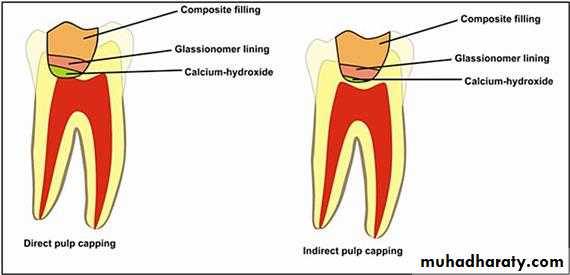
Pulpectomy/RCT
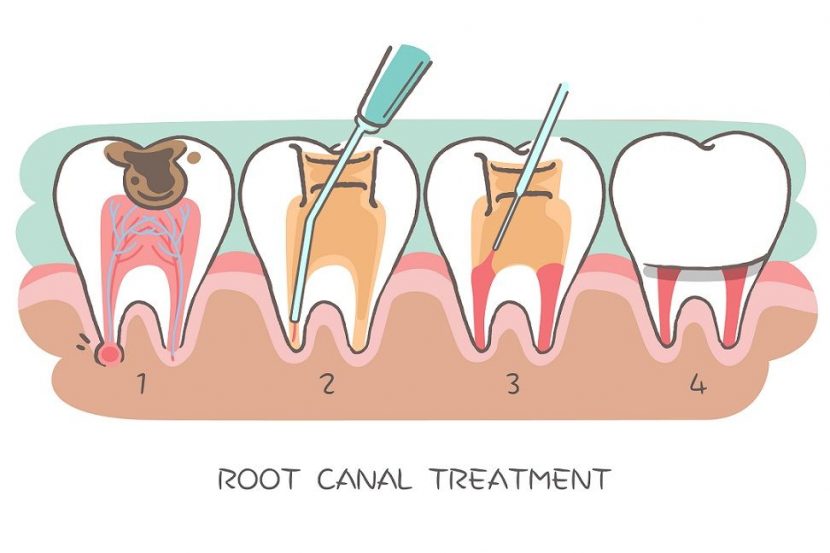
Why Would Your Child Need a Pulpectomy?
The most common reason for a child needing a pulpectomy is because a cavity went untreated for too long, and the soft pulp within a child’s tooth becomes infected. Once the infection reaches the pulp, your child may complain of pain, especially to hot and cold temperatures.
The pulpectomy procedure is similar to a root canal procedure in adults with some variation.
You might be wondering why the dentist wouldn’t just remove a tooth that’s eventually going to fall out on its own anyway. The fact is baby teeth serve more than one purpose. Removing baby teeth can have a serious impact on the way your child is able to eat and speak. For example, too few baby teeth will make chewing very difficult, increasing the chances of choking because the child is unable to grind down the food properly.
Your child’s baby teeth also affect how the permanent teeth fall into place. You can think of their baby teeth as markers that give the permanent teeth a place to go when they eventually erupt through the gums. By removing one or more baby teeth, this can ultimately result in severe orthodontic crowding, misalignments, and malocclusion. Also, children’s confidence and self-esteem will benefit from having all their baby teeth, rather than missing teeth prematurely.
Why could my child need a dental crown?
Crowns are a restorative procedure used to improve a tooth’s shape or to strengthen a tooth. Crowns are most often used for teeth that are broken, worn, or have portions destroyed by tooth decay where there is little remaining healthy tooth structure. Crowns can also be used on the front teeth to replace areas of fracture or decay.
How do dental crowns work?
A crown is a “cap” cemented onto an existing tooth that usually covers the portion of the tooth above the gumline. In effect, the crown becomes the tooth’s new outer surface.
What are dental crowns made of?
Crowns can be made of porcelain (tooth-colored) or metal (stainless steel). Porcelain crowns are often preferred in the front because they mimic the translucency of natural teeth and are very strong. On the back teeth, either zirconia or stainless steel crowns may be recommended depending on the extent and position of tooth decay.
Crowns
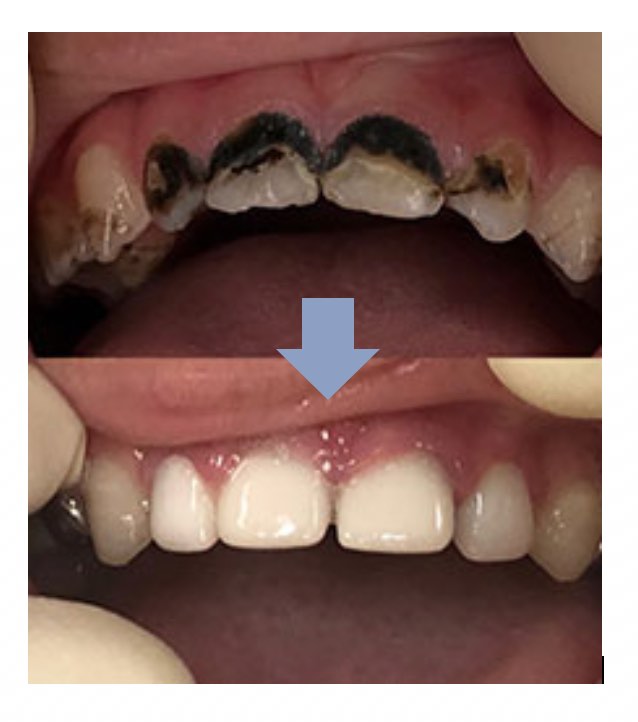
Space Maintainers
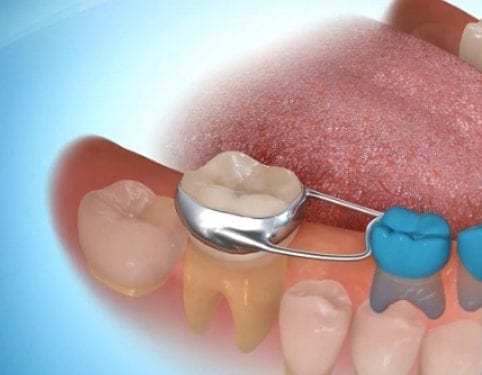
Dental space maintainers (or spacers) are devices used for kids who have lost some baby teeth but their permanent teeth have a while before they will grow in.
They hold space for the appropriate adult teeth to grow in. They also prevent the remaining adjacent baby teeth from moving into the open space.
When your dentist may recommend a space maintainer appliance:
It is important to consult with an orthodontist or pediatric dentist about using a space maintainer anytime a child loses their baby teeth early. Especially in the back of the mouth where there is often less room for permanent teeth to develop and erupt.
Spacers are not meant to move or shift any teeth, so there is usually no pain associated with them. Kids generally get used to them quickly.Space maintainers can remain in the mouth until the adult teeth push the spacer out.
The bottom line:
The most important thing is to consult a dentist if your child’s primary teeth begin to fall out earlier than expected. Your youngster may benefit from a dental space maintainer. It is better to be on the cautious side rather than leaving things to chance. If your child needs a spacer but is never fitted for one, he or she could be more likely to need braces when all the adult teeth emerge.
It is normal for the children to have unhealthy oral habits which
include thumb sucking, nail biting, lip biting, tongue thrusting, mouth
breathing.
separate appliances are designed and manufactured. These appliances are
known as habit breaking appliances. These appliances can either be of
removable or fixed type.
- Upper front teeth flaring outward and the lower ones moving back and inward.
- It can also hold back the growth of the lower jaw.
- Malformation of the upper palate while causing the upper jaw to be thrust forward.
- Misalignment of the teeth, an anterior open bite (where the front
teeth fail to close together), collapse of the upper jaw causing other
problems.
Habit-breaking app
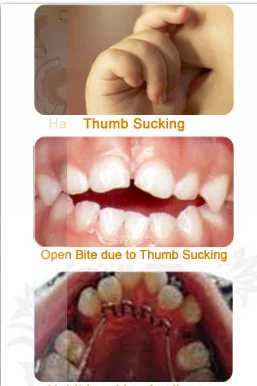
Tongue-tie/ Lip-tie
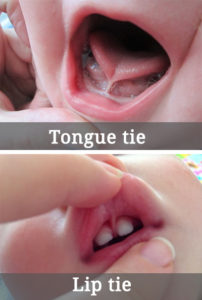
Tongue–tie happens when the frenulum, the string of tissue under your baby’s tongue, which attaches the tongue to the floor of the mouth, is too short or too tight. When the child’s tongue is tethered to the floor of his or her mouth by an unusually short or thick string of tissue, it can interfere with basic functions. Everyday activities, such as breastfeeding, eating, swallowing, speech and even just sticking out his or her tongue, can be made more difficult or even impossible. Oral hygiene cannot be maintained.Even everyday activities, such as licking an ice cream cone, kissing or playing certain instruments can be challenging. In speech, the mobility of the tongue is necessary for certain sounds, such as “t”, “d”, “z”, “s”, “th”, “r”, and “I.”Extremely thick frenulum can also lead to the formation of a gap or space between the bottom teeth.
Severe lip-tie can interfere with a baby’s ability to maintain a latch
during breastfeeding. A thick labial frenulum can also affect the way
the child’s top front teeth come in, often causing a gap between the two
front teeth.
There is hope. Tongue-tie and lip-tie do not have to be lifelong problems. In most cases, both tongue and lip-ties can be released with either a scalpel or scissors, or by laser. Lasers are a great choice as they do not normally require anesthesia. Laser treatment is also able to cauterize the area immediately, so there is minimal bleeding and minimizes any risk of infection.

Dr. Prachi Bafna

Your First Visit
*Full exam, cleaning, and x-rays
*Time to meet your dentist and ask questions
*Custom treatment plan designed just for you
*Discussion of finances and insurance options
See us once and you’ll become a patient for life. There’s no other dentist in Pune quite like us. At your first appointment, expect to spend about 90 minutes with us for examination & get-to-know-you time with your dentist.
ON TIME
We know how busy your schedule is, so your appointment will always start on time with no waiting. We work on appointment basis.
HASSLE-FREE
The entire process from scheduling your appointment to billing is hassle-free. All modes of payment are available.
HI-TECH
You may not get as excited as we do about our machines, but you’ll smile when you see how great you look and feel.


dr.bafnaprachi@gmail.com
PHONE NUMBER
9588695155
020-27293429
timings
Mon-Sat: 10am-9pm
Sun: By Appointment`
ADDRESS
203, Fortune House,
Baner-Pashan Link Road
Pune-411021
